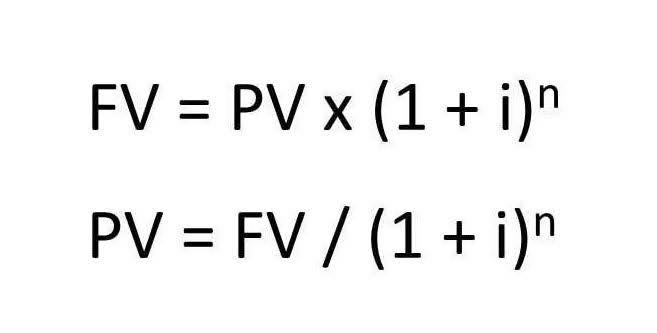What Are T Accounts and Why Do You Need Them?

This system allows accountants and bookkeepers to easily track account balances and spot errors in journal entries. As you can see, there is one ledger account for Cash and another for Common Stock. Cash is labeled account number 101 because it is an asset account type. The date of January 3, 2019, is in the far left column, and a description of the transaction follows in the next column. Cash had a debit of $20,000 in the journal entry, so $20,000 is transferred to the general ledger in the debit column. The balance in this account is currently $20,000, because no other transactions have affected this account yet.

How are T-accounts used in accounting?
In this case, you debit $20,000 in the cash T account and credit $20,000 in the revenue T account. Two entries (hence, double entry), one on the left and one on the right, so everything is good. A T-Account can be created by manually drawing out the two columns, https://x.com/BooksTimeInc labeling each one as Debit and Credit.
- These errors may never be caught because a double entry system cannot know when a transaction is missing.
- When John receives payment from one of his customers, he will note the transaction on the T-account of his accounts receivable journal and also the T-account of his cash or bank account journal.
- Whenever cash is received, the Cash account is debited (and another account is credited).
- As I’ve received the coffee machine, I’ve gained £700 worth of fixed assets (this account has been debited).
- Since this figure is on the credit side, this $300 is subtracted from the previous balance of $24,000 to get a new balance of $23,700.
Which of these is most important for your financial advisor to have?
Splitting out debits and credits makes it easier to quickly spot things when looking at the ledger. The main thing you need to know about debit and credit entries is that they are the equal and opposite sides of a financial transaction. They’re https://www.bookstime.com/ simply words representing where cash is coming from, and where it’s flowing to, within a business. In double-entry bookkeeping, every transaction affects two accounts at the same time (hence the word double). One of these accounts is always debited, while the other always credited.
How Do I Create a T-Account?
On January 3, there was a debit balance of $20,000 in the Cash account. Since both are on the debit side, they will be added together to get a balance on $24,000 (as is seen in the balance column on the January 9 row). On January 12, there was a credit of $300 included in the Cash ledger account. Since this figure is on the credit side, this $300 is subtracted from the previous balance of $24,000 to get a new balance of $23,700. The same process occurs for the rest of the entries in the ledger and their balances.
- You notice there are already figures in Accounts Payable, and the new record is placed directly underneath the January 5 record.
- On February 15th, the company XYZ invoices a client for $600 worth of service.
- While a journal entry is a record of a single transaction in chronological order, showing the debits and credits of each account affected.
- A business owner can also use T-accounts to extract information, such as the nature of a transaction that occurred on a particular day or the balance and movements of each account.
- Well organized T accounts are the first step in the bookkeeping and accounting process.
Do you own a business?

Maintaining easy-to-read, detailed, accurate, and compliant books is a challenge. At worse, it can lead to an audit and expensive tax trouble in the future. By creating the paper trail between the digital documents on the one side and the receipts, invoices, etc. on the other side, the accountant can be even more sure that the books are in order. The best consultants, agencies, and specialized services to help you grow. Keep customers using your service and head-off churn before it happens. A financial professional will offer guidance based on the information provided and offer a no-obligation call to better understand your situation.
Another way to visualize business transactions is to write a general journal entry. Each general journal entry lists the date, the account title(s) to be debited and the corresponding amount(s) followed by the account title(s) to be credited and the corresponding amount(s). Let’s illustrate the general journal entries for the two transactions that were shown in the T-accounts above. The key financial reports, your cash flow, profit & loss and balance sheet are an organised representation of these fundamental accounting records.
- After almost a decade of experience in public accounting, he created MyAccountingCourse.com to help people learn accounting & finance, pass the CPA exam, and start their career.
- The visual appearance of the ledger journal of individual accounts resembles a T-shape, hence why a ledger account is also called a T-account.
- In this lesson we’re going to learn exactly what these are, we’ll look at a detailed example of how to put a T account together, and we’ll learn why they’re so important.
- If you use accounting software like Skynova’s, the method will be the same.
- Since management uses these ledger accounts, journal entries are posted to the ledger accounts regularly.
This prepaid £6000 represents an asset because my landlord owes me 3 months usage of his property since I have paid rent in advance. T-accounts are used to track debits and credits made to an account. This is posted to the Cash T-account on the debit side beneath the January 17 transaction.


Expense accounts, equity accounts, cash, and a general ledger account are all types of accounts for which you’ll create journal entries. Checking your recorded transactions, especially when adding them to your general ledgers, is known as balancing your books. As a small business owner, though, you already have so many hats to wear, and remembering t accounts which accounts go up when debited and down when credited can feel like just a little too much. Luckily, Skynova’s accounting software and business templates can help you keep your small business’s finances organized, up to date, and running smoothly.
- This is posted to the Cash T-account on the credit side beneath the January 14 transaction.
- The debits for each transaction are posted on the left side while the credits are posted on the right side.
- I now have three month’s worth of rent paid for, so my prepayments (prepaid rent) account is debited £6000.
- A very simple general ledger entry to look at as a T-account example is the sale of goods.
- Above the T is the name of the account, and the T account is then separated into left (debit) and right (credit) sides.
- It can be used to balance books by adding all transactions in a set of accounts so the total debits equal the total credits for each account.
- My bank account is credited £4000, whilst the accounts payable account is debited £2000 and rent is debited £2000.
When teaching accounting or bookkeeping
The accounts have the letter T format and are thus referred to as the T accounts. In the T- Accounts, the debit side always lies on the left side of the T outline, and the credit side always lies on the right side of the T outline. The main purpose of using a T-Account is to help track and manage an individual’s financial transactions. By keeping track of debits and credits, it becomes easier to monitor the flow of money going in and out of a particular account. If you want to review debits and credits, see the lesson on debits and credits. And for a review of the most common journal entries, see the lesson on basic accounting journal entries.


